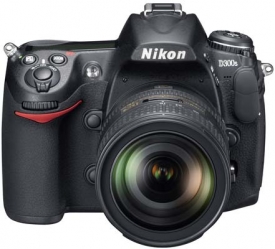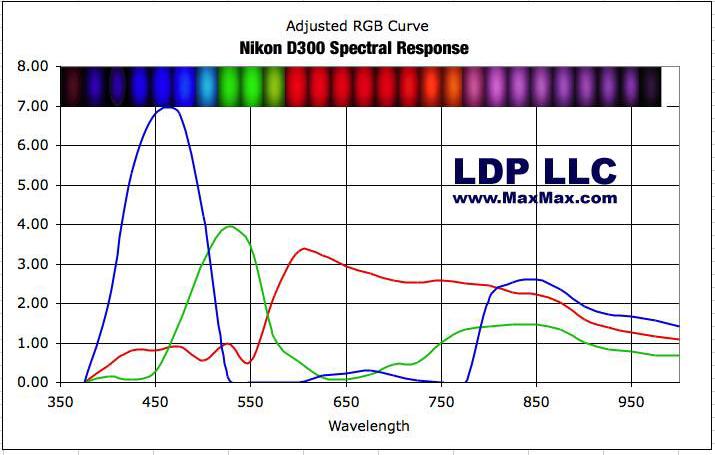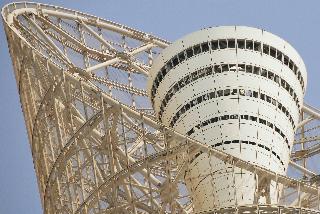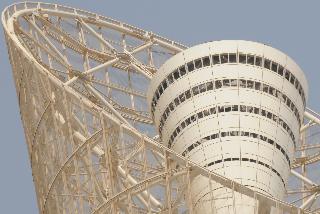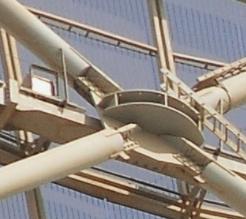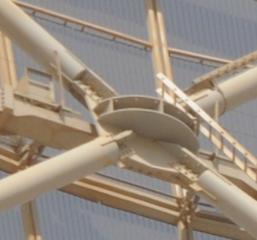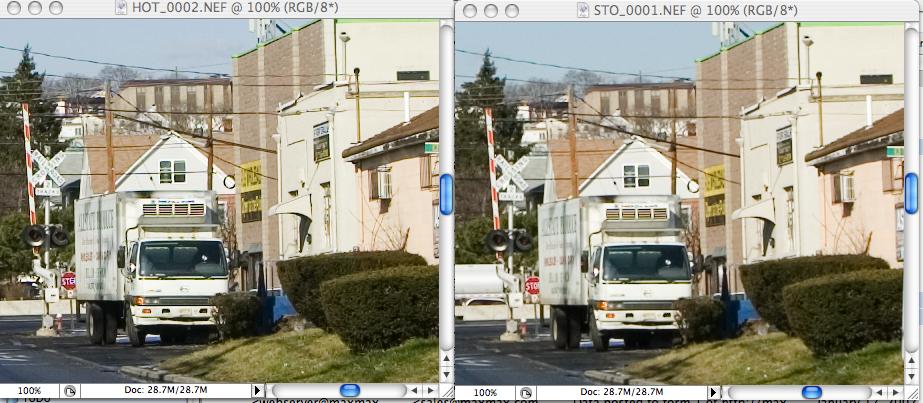Specifications
Single-lens reflex digital camera
Nikon F mount (with AF coupling and AF contacts)
Approx. 1.5 x conversion factor (Nikon DX format)
12.3 million
23.6 x 15.8 mm CMOS sensor
13.1 million
Image Sensor Cleaning, Image Dust Off reference data (requires optional Capture NX 2 software)
4,288 x 2,848 [L], 3,216 x 2,136 [M], 2,144 x 1,424 [S]
? NEF (RAW): 12 or 14 bit,
lossless compressed, compressed, or uncompressed
? TIFF (RGB)
? JPEG: JPEG-Baseline compliant with fine (approx. 1:4), normal
(approx. 1:8) or basic (approx. 1:16) compression (Size priority);
Optimal quality compression available
? NEF (RAW) + JPEG: Single photograph recorded in both NEF (RAW) and
JPEG formats
Can be selected from Standard, Neutral, Vivid, Monochrome; storage for up to nine custom Picture Controls
Type I CompactFlash memory cards (UDMA compliant); SD memory cards, SDHC compliant
Either card can be used as the primary card; secondary card can be used for overflow or backup storage, or for separate storage of NEF (RAW) and JPEG images; images can be copied between cards
DCF (Design Rule for Camera File System) 2.0, DPOF (Digital Print Order Format), Exif 2.21 (Exchangeable Image File Format for Digital Still Cameras), PictBridge
Eye-level pentaprism single-lens reflex viewfinder
Approx. 100% horizontal and 100% vertical
Approx. 0.94 x (50mm f/1.4 lens at infinity; -1.0 m-1)
19.5 mm (-1.0 m-1)
-2 to +1 m-1
Type B BriteView Clear Matte screen Mark II with AF area brackets (framing grid can be displayed)
Quick return
When depth-of-field preview button is pressed, lens aperture is stopped down to value selected by user (A and M modes) or by camera (P and S modes)
Instant return, electronically controlled
? DX NIKKOR: All functions
supported
? Type G or D AF NIKKOR: All functions supported (PC Micro-NIKKOR
does not support some functions); IX-NIKKOR lenses not supported
? Other AF NIKKOR: All functions supported except 3D color matrix
metering II; lenses for F3AF not supported
? AI-P NIKKOR: All functions supported except 3D color matrix
metering II
? Non-CPU: Can be used in exposure modes A and M; color matrix
metering and aperture value display supported if user provides lens
data (AI lenses only)
?Electronic rangefinder can be used if maximum aperture is f/5.6 or
faster
Electronically-controlled vertical-travel focal-plane shutter
1/8,000 to 30 s in steps of 1/3, 1/2 or 1 EV, bulb, X250
X = 1/250 s; synchronizes with shutter at 1/320 s or slower (flash range drops at speeds between 1/250 and 1/320 s)
Single frame, continuous low speed, continuous high speed, quiet shutter-release, self-timer, mirror up
With Rechargeable Li-ion Battery
EN-EL3e: Approx. 1 to 7 fps (CL), approx. 7 fps (CH);
With optional Multi-Power Battery Pack MB-D10 and Rechargeable Li-ion
Battery EN-EL4a: Approx. 1 to 7 (CL) fps, approx. 8 fps (CH)*
* With a battery other than Rechargeable Li-ion Battery EN-EL4a, the
continuous shooting speed may be slower than 8 fps in continuous
high-speed mode.
Can be selected from 2, 5, 10 and 20 s duration
TTL exposure metering using 1,005-pixel RGB sensor
? Matrix: 3D color matrix metering
II (type G and D lenses); color matrix metering II (other CPU lenses);
color matrix metering available with non-CPU lenses if user provides
lens data
? Center-weighted: Weight of 75% given to 8-mm circle in center of
frame. Diameter of circle can be changed to 6, 10 or 13 mm, or
weighting can be based on average of entire frame (fixed at 8 mm when
non-CPU lens is used)
? Spot: Meters 3-mm circle (about 2% of frame) centered on selected
focus point (on center focus point when non-CPU lens is used)
? Matrix or center-weighted
metering: 0 to 20 EV
? Spot metering: 2 to 20 EV
Combined CPU and AI
Programmed auto with flexible program (P); Shutter-priority auto (S); Aperture-priority auto (A); Manual (M)
-5 to +5 EV in increments of 1/3, 1/2 or 1 EV
2 to 9 frames in steps of 1/3, 1/2, 2/3 or 1 EV
Luminosity locked at detected value with AE-L/AF-L button
ISO 200 to 3200 in steps of 1/3, 1/2 or 1 EV; can also be set to approx. 0.3, 0.5, 0.7 or 1 EV (ISO 100 equivalent) below ISO 200 or to approx. 0.3, 0.5, 0.7 or 1 EV (ISO 6400 equivalent) above ISO 3200
Can be selected from auto, extra high, high, normal, low or off
2 to 5 frames with strength levels varying according to number of frames chosen; for 2 frames, off and a chosen level are applied
Nikon Multi-CAM 3500DX autofocus sensor module with TTL phase detection, fine-tuning, 51 focus points (including 15 cross-type sensors) and AF-assist illuminator (range approx. 0.5 to 3 m/1 ft. 8 in. to 9 ft. 10 in.)
-1 to +19 EV (ISO 100 equivalent, 20?C /68?F)
? Autofocus: Single-servo AF (S);
continuous-servo AF (C); predictive focus tracking automatically
activated according to subject status
? Manual (M): Electronic rangefinder supported
Can be selected from 51 or 11 focus points
Single-point AF, dynamic-area AF, auto-area AF
Focus can be locked by pressing shutter-release button halfway (Single-servo AF) or by pressing AE-L/AF-L button
Manual pop-up with button release; Guide number of 17/56 (m/ft., ISO 200, 20 ?C/68 ?F) or 12/39 (m/ft., ISO 100 equivalent, 20 ?C/68 ?F)
? TTL: i-TTL balanced fill-flash
and standard i-TTL flash for digital SLR using 1,005-pixel RGB sensor
are available with built-in flash, Speedlight SB-900, SB-800, SB-600
or SB-400
? Auto aperture: Available with Speedlight SB-900 or SB-800 and CPU
lens
? Non-TTL auto: Supported flash units include Speedlight SB-900,
SB-800, SB-28, SB-27 and SB-22S
? Range-priority manual: Available with Speedlight SB-900 and SB-800
Front curtain sync, slow sync, rear-curtain sync, red-eye reduction, red-eye reduction with slow sync
-3 to +1 EV in increments of 1/3, 1/2 or 1 EV
2 to 9 frames in steps of 1/3, 1/2, 2/3 or 1 EV
Lights when built-in flash or flash unit such as Speedlight SB-900, SB-800, SB-600, SB-400, SB-80DX, SB-28DX or SB-50DX is fully charged; blinks after flash is fired at full output
ISO 518 hot-shoe with sync and data contacts, and safety lock
Advanced Wireless Lighting supported with built-in flash, Speedlight SB-900, SB-800 or SU-800 as commander and SB-900, SB-800, SB-600 or SB-R200 as remotes; Auto FP High-Speed Sync and modeling illumination supported with all CLS-compatible flash units except SB-400; Flash Color Information Communication and FV lock supported with all CLS-compatible flash units
ISO 519 sync terminal with locking thread
Auto (TTL white-balance with main image sensor and 1,005-pixel RGB sensor), Incandescent, Fluorescent (7 options), Direct Sunlight, Flash, Cloudy, Shade, preset manual (able to store up to 5 values) and color temperature setting (2,500K to 10,000K); fine-tuning available for all options
2 to 9 frames in steps of 1, 2 or 3
Tripod, Hand-held
? Tripod: Contrast-detect AF
anywhere in frame
? Hand-held: TTL phase-detection AF with 51 focus points (including
15 cross-type sensors)
1,280 x 720/24 fps, 640 x 424/24 fps, 320 x 216/24 fps
AVI
Motion-JPEG
Contrast-detect AF on a desired point within a frame is possible (Tripod mode)
Sound can be recorded via built-in (monaural) or optional external (stereo/monaural) microphone; sensitivity can be adjusted
5 min (1,280 x 720 pixels), 20 min (640 x 424, 320 x 216 pixels)
3-in., approx. 920k-dot (VGA), low-temperature polysilicon TFT LCD with 170? viewing angle, approx. 100% frame coverage, and brightness adjustment
Full-frame and thumbnail (4, 9 or 72 images) playback with playback zoom, movie playback, slide show, histogram display, highlights, auto image rotation, and image comment (up to 36 characters)
Hi-Speed USB
Can be selected from NTSC and PAL
HDMI Mini connector (Type C); camera monitor turns off when HDMI cable is connected
Stereo mini-pin jack (3.5-mm diameter)
Can be used to connect optional remote control, GPS Unit GP-1 or GPS device compliant with NMEA0183 version 2.01 or 3.01 (requires optional GPS Cable MC-35 and cable with D-sub 9-pin connector)
Chinese (Simplified and Traditional), Danish, Dutch, English, Finnish, French, German, Italian, Japanese, Korean, Norwegian, Polish, Portuguese, Russian, Spanish, Swedish
One Rechargeable Li-ion Battery EN-EL3e
Optional Multi-Power Battery Pack MB-D10 with one Rechargeable Li-ion Battery EN-EL3e, EN-EL4a/EN-EL4 or eight R6/AA-size alkaline, Ni-MH, lithium or nickel-manganese batteries; Rechargeable Li-ion Battery EN-EL4a/EN-EL4 and R6/AA-size batteries available separately; Battery Chamber Cover BL-3 (available separately) required when using Rechargeable Li-ion Battery EN-EL4a/EN-EL4
AC Adapter EH-5a/EH-5 (available separately)
1/4 in. (ISO 1222)
Approx. 147 x 114 x 74 mm/5.8 x 4.5 x 2.9 in.
Approx. 840 g/1 lb. 14 oz. without battery, memory card, body cap or monitor cover
0-40?C/32-104?F
Less than 85% (no condensation)
Rechargeable Li-ion Battery EN-EL3e, Quick Charger MH-18a, Eyepiece Cap DK-5, Rubber Eyecup DK-23, USB Cable UC-E4, Audio Video Cable EG-D2, Camera Strap AN-DC4, LCD Monitor Cover BM-8, Body Cap BF-1A, Accessory Shoe Cover BS-1, Software Suite CD-ROM

